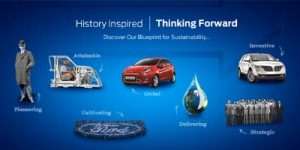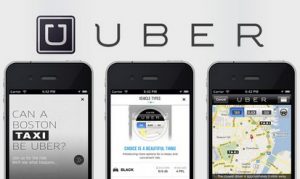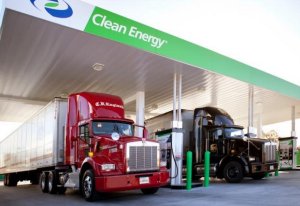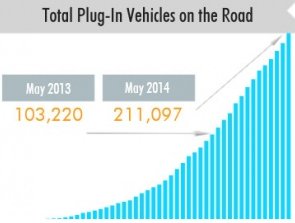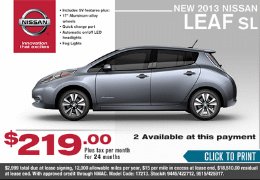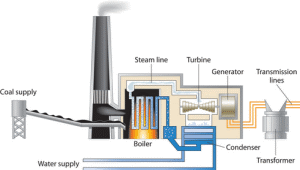by Jon LeSage, editor and publisher, Green Auto Market
Here’s my take on the 10 most significant and interesting occurrences in clean transportation during the past week…….
1. Ford has gone to both ends of the spectrum
Ford saw the best and worst of it last week for its public image. The 2013 and 2014 hybrid and plug-in hybrid versions of the Fusion and C-Max, the Lincoln MKZ Hybrid, and the 2014 Fiesta, had incorrect mileage figures initially – it’s the second time Ford has dealt with incorrect MPG ratings. Around that time, Ford issued its 15th annual Sustainability Report – with its commitment to water conservation. Ford was able to reduce per vehicle by 30% at its global facilities last year. Now, the pressure is on Ford and the US Environmental Protection Agency to institute more realistic and honest mileage rating procedures. The rollback “will force the company to abandon many of the competitive and superlative claims it has made over the past 18 months,” according to Automotive News.
2. NADA says Get the Facts about Tesla
Fierce competition by dealers is one of the reasons car buyers should go to franchised dealers – and avoid Tesla corporate stores – according to a National Automobile Dealers Association animated informational TV ad. Creating good paying local jobs and adding to the tax revenue for communities are other things traditional dealers need to be acknowledged for, according to the commercial. NADA clearly wasn’t happy to hear about the assembly in the state of New Jersey allowing Tesla to directly sell its electric luxury car directly to consumers.
3. Consumers want to see fuel efficiency improve in new vehicles
Americans are worried about gasoline prices going up and want to purchase more fuel efficient vehicles, according to the annual Consumer Federation of America survey. In the recent survey, 80% of those surveyed said that “in thinking about the next five years,” they were “concerned” about gasoline prices with 64% indicating “great” concern.
4. Tesla likely selling its technology to another automaker
Indian automaker Mahindra may be joining ranks with Daimler and Toyota by bringing in Tesla Motors patented technology to its electric vehicle offerings. Mahindra Reva Electric Vehicles, which is part of the Mahindra Group, hasn’t decided yet on how the company may tap into Tesla’s electric motor or battery pack, Mahindra Reva is very enthusiastic about the potential of accessing this technology sharing.
5. Kia enters the EV market
Kia is rolling out its first plug-in electric vehicle – the Soul EV, an electric version of its popular hatchback which has been gaining lots of attention in recent years through its hamster commercials. It’s got a 27 kWh lithium-ion battery pack and received a 131 miles per charge range figure in Europe. That could somewhere around 85 miles per charge in the US. It just started volume production and being exported globally.
6. Harley enters the world of electric bikes
Harley-Davidson (yes – the maker of huge, loud motorcycles) has entered the electric bike market. It’s leaking tidbits on its Project LiveWire. This is a test run of an electric motorcycle that will go into production in about two years from now. It will be a big risk – most of the demand for e-bikes is coming from consumers who want cheaper motorcycles and scooters; that will be a problem in China, where consumers want an inexpensive bike to move around crowded city streets.
7. Massachusetts offering rebates for electric vehicle buyers
Buyers of electric vehicles in Massachusetts will have access to rebates up to $2,500. Rebates are available on a first-come, first-served basis until all the $2 million in funding has been used up. All applications must be submitted within three months of the purchase or lease of an EV.
8. Fleets will be bringing in a lot more alternative fuel vehicles
A survey of 400 executives who oversee fleets by GE Capital reported that nearly half will be looking to add alternative fuel vehicles over the next five years to reduce fuel costs. As for now, only 4% of them operate alternative fuel vehicles. About 27% of them plan on expanding their fleets in the next year.
9. America’s Natural Gas Highway takes another step forward
Clean Energy Fuels Corp. said that its El Paso, Texas, refueling facility has opened up and plays a critical role in the natural gas fueling company’s campaign, which is called America’s Natural Gas Highway. This program enables heavy-duty LNG truck fueling along the transcontinental Interstate 10 highway between Los Angeles and Houston.
10. Navigant report digs into the future of next-gen advanced batteries
A new Navigant Research report looks at the global market for next-generation advanced batteries. The main focus of the report is on leading battery chemistry, lithium ion, and the energy storage device types that might eventually replace it; these include ultracapacitors and lithium sulfur, solid electrolyte, magnesium ion, next-generation flow, and metal-air batteries. The company forecasts that global next-generation advanced battery revenue will grow from $182.3 million in 2014 to $9.4 billion in 2023.

